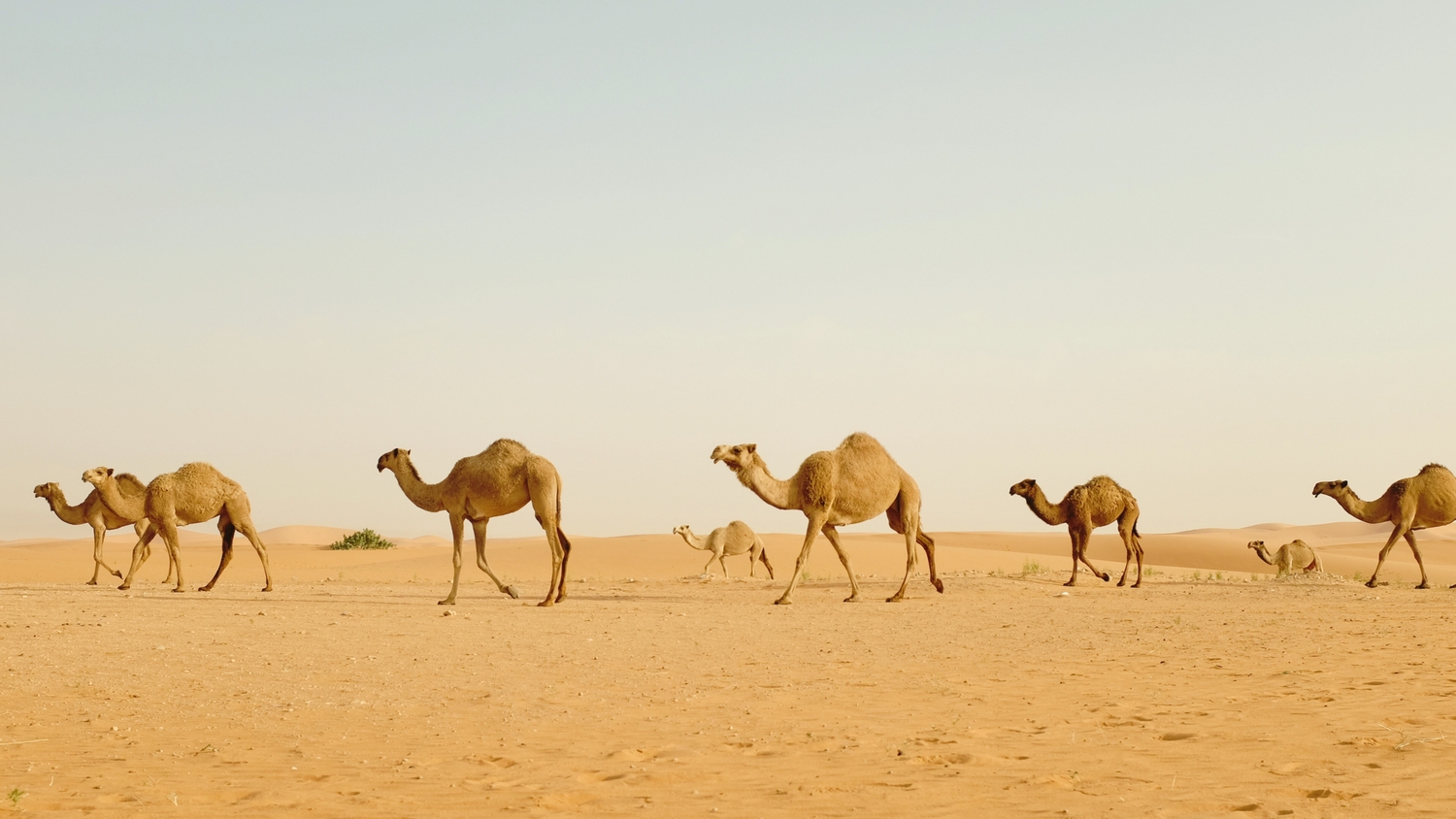The Camel’s Secret: How This Desert Survivor Could Revolutionize Modern Biotechnology

In the global race for biotechnological innovation, a few animal species have long dominated the spotlight. Mice, zebrafish, even yeast, have fueled breakthroughs in labs worldwide. But one remarkable creature has remained largely overlooked: the dromedary camel (Camelus dromedarius), a mammal uniquely evolved to thrive where life itself is tested, across the scorching sands of some of the planet’s harshest environments.
Today, as Saudi Arabia intensifies its investments in science and biotechnology under its Vision 2030 agenda, the camel is emerging not merely as a cultural symbol, but as an unlikely gateway to scientific discovery.
A Master of Survival
From a biological standpoint, the camel is a marvel of evolutionary engineering. In conditions that would prove fatal to most animals, camels can endure the loss of up to 30 percent of their body weight in water without succumbing to dehydration. They also tolerate searing temperatures above 40°C without breaking into a sweat, a feat achieved through a finely tuned combination of hormonal, renal, and cellular adaptations (Yousef et al., 1989; Al-Haidary, 2004).
Yet, the camel’s value to science extends far beyond its legendary endurance. This desert survivor harbors unique physiological traits that hold vast promise for biotechnology.
A New Frontier in Immunology
Among the camel’s most extraordinary features is its immune system, specifically, its ability to produce “nanobodies.” These are tiny, highly stable antibody fragments capable of binding to molecular targets that conventional antibodies cannot reach. Their potential applications are broad and transformative, ranging from targeted drug delivery and infectious disease diagnostics to advanced cancer imaging (Muyldermans, 2013).
Unlike traditional antibodies, which are composed of two heavy and two light chains, camelid nanobodies consist of just a single heavy chain domain. This structural simplicity makes them easier to engineer, highly stable under extreme conditions, and adaptable into formats such as biosensors or therapeutic conjugates (Hamers-Casterman et al., 1993).
The pharmaceutical world is already taking notice. In 2018, the FDA approved caplacizumab, a nanobody-based drug derived from camelid antibodies, for the treatment of acquired thrombotic thrombocytopenic purpura, a rare blood clotting disorder (Sanofi, 2018). As Saudi Arabia seeks to expand its biopharma industry, camels offer an ecologically and culturally resonant source of groundbreaking therapies.
Genetic Insights From the Sands
In 2010, the sequencing of the camel genome revealed an equally rich vein of scientific opportunity (Wu et al., 2014). The genetic blueprint of Camelus dromedarius provides insights into its extraordinary adaptations, ranging from insulin sensitivity and metabolic efficiency to mechanisms for water and salt conservation.
Such discoveries could inform new approaches to managing metabolic syndromes, diabetes, and kidney diseases, ailments prevalent across the Gulf region.
Meanwhile, camel milk, a staple in traditional Saudi and Bedouin diets, is drawing scientific attention for its bioactive properties. Studies suggest it may help regulate blood sugar, reduce inflammation, and boost immune function (Korish & Arafah, 2013; Malik et al., 2012). Unlocking the molecular secrets of camel milk could lead to the development of novel functional foods and nutraceuticals.
A Kingdom Poised to Lead
Saudi Arabia is uniquely positioned to become a global leader in camel-based biotechnology. With the world’s largest population of domesticated dromedaries, vibrant camel festivals, and a growing network of dedicated research centers, the Kingdom holds both the biological assets and institutional momentum to drive this emerging field forward.
Vision 2030’s emphasis on fostering a regional pharmaceutical industry, promoting knowledge-based sectors, and diversifying the economy aligns perfectly with the potential of camel biotechnology. By investing in camel genetics, immunology, and bio-product innovation, Saudi Arabia could pioneer a new biotech model rooted in both sustainability and cultural relevance.
Rethinking the Camel
Too often regarded solely as a relic of the past or an icon of desert life, the camel is, in truth, a living repository of biological wisdom, shaped by millions of years of adaptation to extreme environments.
In an era of accelerating climate change, emerging infectious diseases, and food insecurity, nature’s most resilient species may hold the keys to our future. And in the race for the next frontier of biotechnology, perhaps it is time to look not to the laboratory mouse, but to the desert camel, with Saudi Arabia at the helm of this scientific renaissance.
References
- Al-Haidary, A. (2004). Physiological responses of camels to heat stress. International Journal of Agriculture & Biology, 6(4), 667–669.
- Hamers-Casterman, C., et al. (1993). Naturally occurring antibodies devoid of light chains. Nature, 363(6428), 446–448.
- Korish, A. A., & Arafah, M. M. (2013). Camel milk ameliorates the oxidative stress and cytokine storm in experimental type 1 diabetic rats. Journal of Medicinal Food, 16(6), 549–555.
- Malik, A., Al-Senaidy, A., Skrzypczak-Jankun, E., & Jankun, J. (2012). A study of the anti-diabetic agents of camel milk. International Journal of Molecular Medicine, 30(3), 585–592.
- Muyldermans, S. (2013). Nanobodies: Natural single-domain antibodies. Annual Review of Biochemistry, 82, 775–797.
- Sanofi. (2018). Sanofi receives FDA approval for Caplacizumab. [Press release]
- Wu, H., Guang, X., Al-Fageeh, M. B., et al. (2014). Camelid genomes reveal evolution and adaptation to desert environments. Nature Communications, 5, 5188.
Yousef, M. K., Dill, D. B., & Johnson, H. D. (1989). Physiology of the Camel. Oxford: Pergamon Press.
